Your Guide to Choosing Interior Lighting
While picking a fixture you like is important when choosing interior lighting for your home, you also want to consider things like the purpose of the light and how the light bulb's color temperature will affect the room. It's a lot to think about, which is why our team at Reliable Heating & Air has created this interior lighting guide to help you.
When selecting indoor lighting for your home, you'll want to consider:
Purpose
Fixture type
Light bulb type
Color temperature
Want help choosing and installing indoor lighting? Call Reliable Heating & Air at (770) 594-9969 or schedule an appointment.
Our expert electricians will go over your indoor lighting options to help you bring your vision to life and give you the most reliable lighting installation in the Atlanta area.
Purpose
Every indoor light fixture has at least one of three purposes:
Ambient lighting: Also called "general lighting", ambient lighting refers to the main fixtures in the room or area that make it visible. Ambient lighting can also include natural lighting from windows, skylights and doors.
Accent lighting: Designed to highlight a specific feature or area, accent lighting gives just enough light to the space or feature (artwork, furniture, etc.) to make it visually interesting.
Task lighting: Task lighting gives light to a specific area for work or safety purposes. Most table and floor lamps are used for task lighting—giving you extra visibility to work, read or safely walk through an area.
Sometimes light fixtures can have dual purposes. For example, lighting beneath your kitchen cabinets can both accent your backsplash or countertops (accent lighting) and give you better light for reading cookbooks (task lighting).
Once you've decided what purpose the lighting will serve, it's time to select a fixture type.
Fixture type
When it comes to choosing indoor lighting fixtures, you have a wide variety of options in not only the fixture type, but also where you want the fixture hung (in the ceiling, on the wall, under cabinets, etc.).
Ceiling fixtures
Recessed
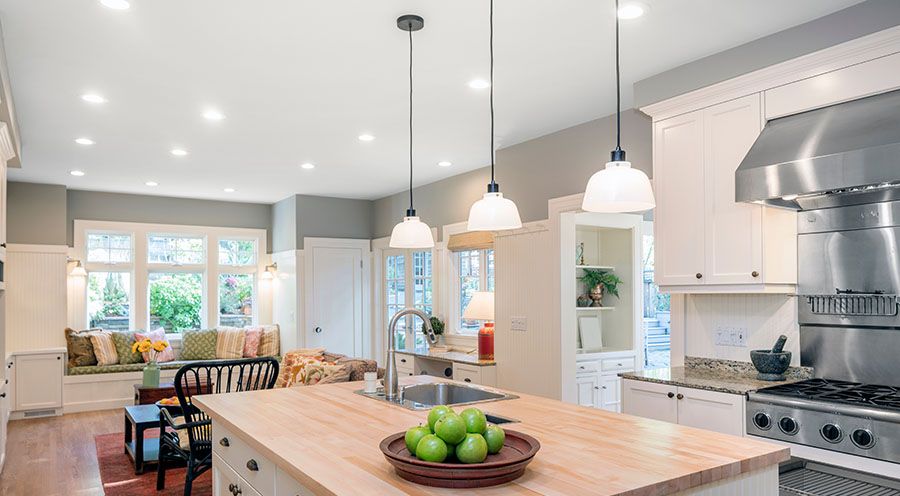
Recessed lights, also called can lights or wafers, are installed inside the ceiling so they're flush with the ceiling. Recessed lights are most often paired with other ceiling fixtures (like pendants or track lighting) to help brighten living rooms, kitchens and bathrooms—especially ones with lower ceilings.
Pendant
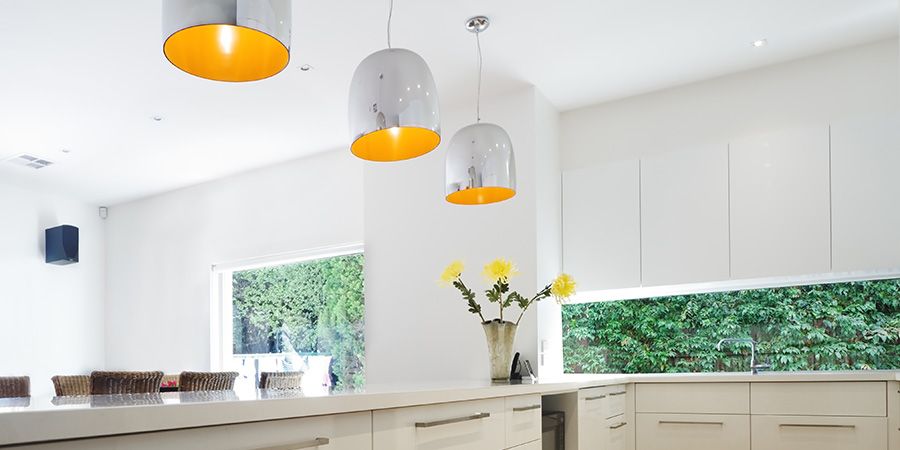
Pendant lights are fixtures with single bulbs that hang down from the ceiling by a cord or chain. Normally used as ambient lighting in kitchens and dining rooms with tall or vaulted ceilings, pendant lights can also serve as a focal point or design piece in the room.
Flush mount
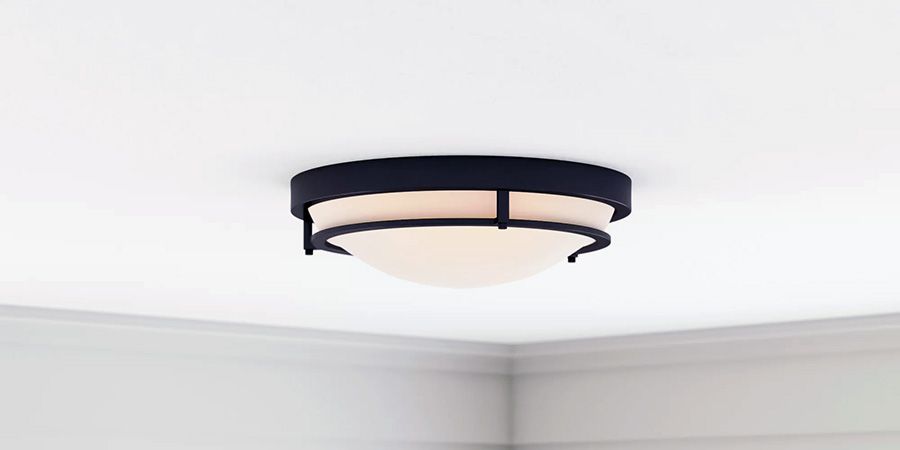
Flush mount light fixtures sit flat against the ceiling, leaving no space between the ceiling and the fixture. Dome lights are a common flush mount fixture, which are normally installed to add ambient lighting to bedrooms, hallways, kitchens, closets, dens and home offices.
Semi-flush mount
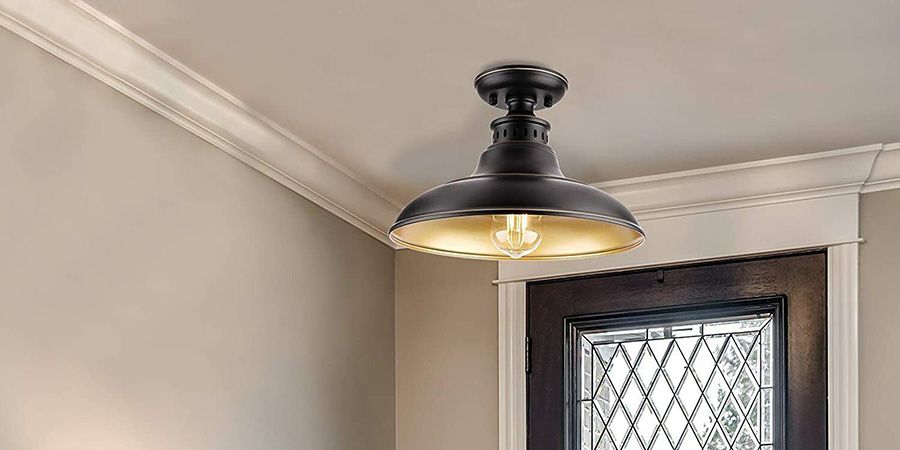
Semi-flush mount fixtures are in between pendant fixtures and flush mount fixtures. They're mounted to the ceiling but have a few inches of space between the ceiling and the shade. Semi-flush lights are most often seen in kitchens, bedrooms and hallways.
Chandelier
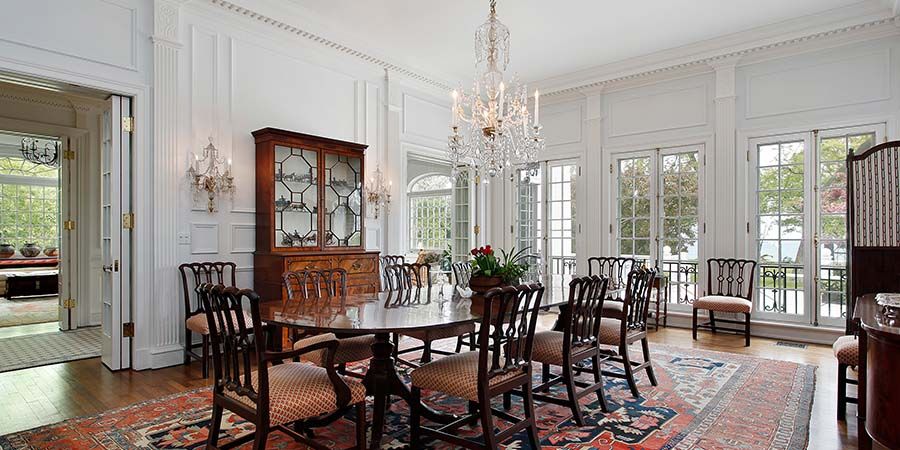
Like pendants, chandeliers hang from a chain or cord but they have multiple bulbs instead of just one. Chandeliers have long been elegant statement pieces for dining rooms, living rooms, and entryways—and with today's modern designs, you can find one that suits just about any style.
Track lighting
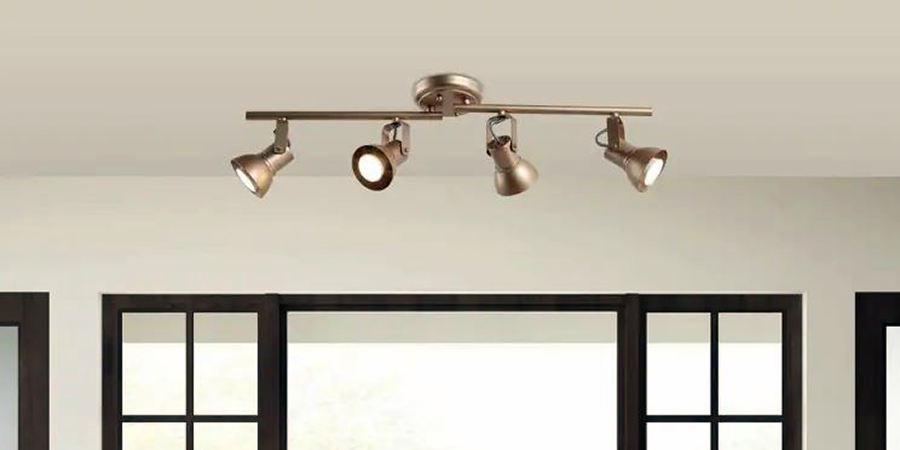
Track lighting consists of multiple bulbs, usually between three and six, on a single fixture. Most often used as accent lighting, track lights come in both straight and curved models to best accentuate the piece or space you want to.
Fans
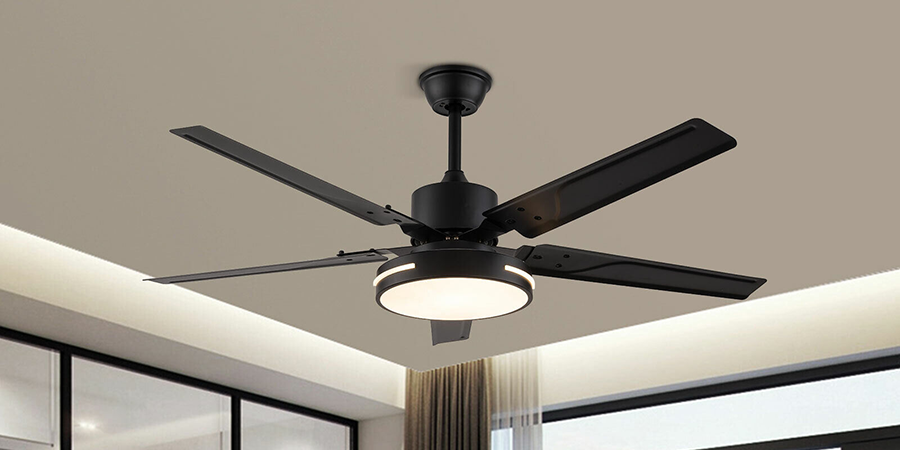
Ceiling fans with lights are a great way to add ambient light to rooms that could use a bit more airflow. A variety of design styles allow you to match the style of your decor (modern, farmhouse, transitional, etc.).
Wall sconces
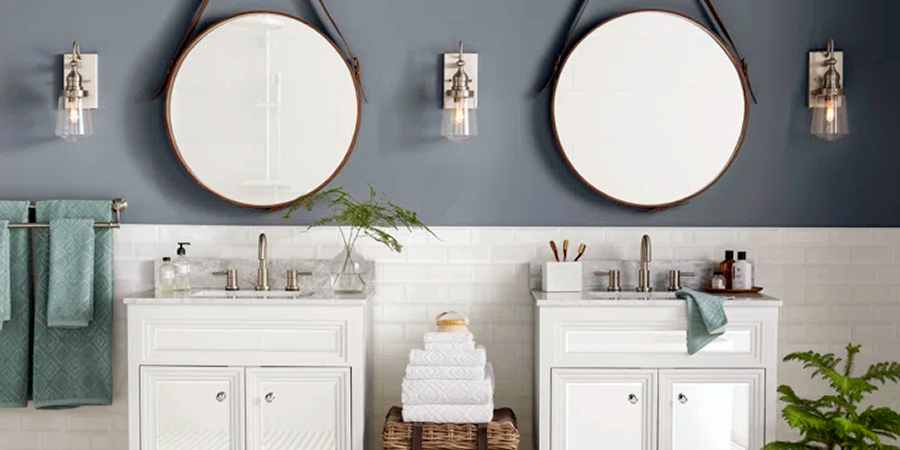
Indoor wall sconces flush mount to the wall and are often used as accent or task lighting for bathroom vanities and in hallways. You'll also see a lot of Atlanta homes with outdoor sconces on either side of their front door.
Floor and table lamps
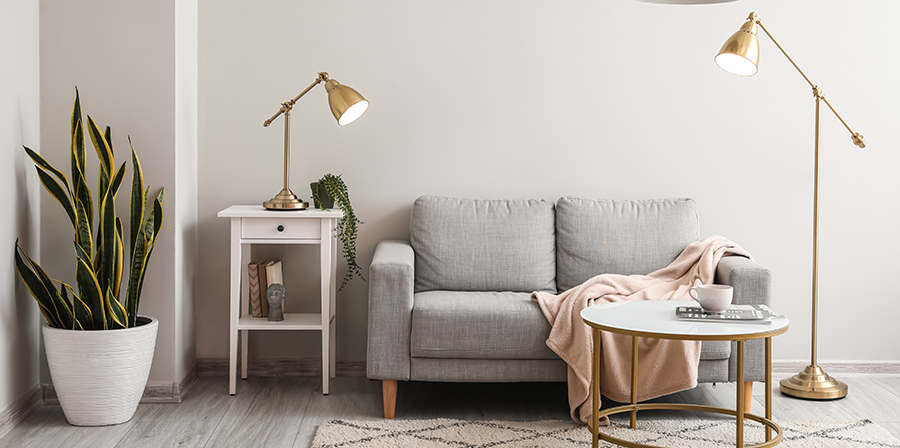
For easy installation, table and floor lamps simply plug into a regular 120-volt outlet and are most often used as task lighting in living rooms, bedrooms, dens and home offices.
Cabinet lighting
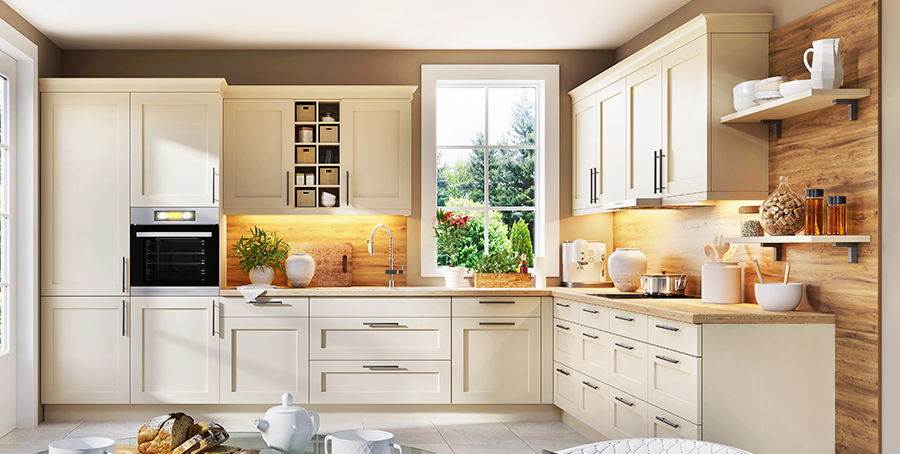
You can also have lighting installed both under and above your kitchen cabinets. Above-cabinet lighting usually acts as ambient lighting to make the space more dramatic, while under-cabinet lighting is more often used as accent lighting to accentuate an appliance or backsplash and task lighting to make reading and preparation easier.
To help you save money on interior lighting, you can also choose fixtures that are compatible with various lighting controls (dimmers, timers, etc.).
After selecting a fixture type, you'll want to look at your options for which type of light bulb to use.
Light bulb type
You have four options for the type of bulb used in your indoor lighting fixtures:
Incandescent: Incandescent bulbs have a filament that burns when electricity runs through it. They've been the standard interior lighting bulb choice for decades—mainly because of their low price—but are decreasing in popularity due to their inefficiency. Incandescent lighting wastes roughly 90% of the energy it uses to light a fixture and usually only last around a year, which actually makes them more expensive in the long run than their alternatives.
Halogen: Halogen bulbs also have a filament, but it's housed in a small tube of halogen gas that essentially allows the filament's burned particles to be recycled—making them slightly more efficient than incandescent bulbs. Halogen bulbs give off a brighter white light, so they're commonly used for track lighting and pendant fixtures.
Compact fluorescent light (CFL): CFL bulbs are fluorescent bulbs, which use gas and even small amounts of mercury, that have been spiraled into a small shape to be used for everyday fixtures. CFL bulbs use minimal electricity but take time to heat up, which makes them better for fixtures you plan to leave on for a while.
Light-emitting diode (LED): Instead of a filament, LED lighting uses a microchip that illuminates tiny lights inside the bulb. Interior LED lighting costs more than other bulb types, but uses around 90% less electricity than interior incandescent lighting, lasts almost 25 times longer, and doesn't use any hazardous materials.
Learn more about how efficient lighting lowers your energy bills in our blog.
No matter what type of light bulb you choose for your indoor light fixtures, you'll have a range of color temperatures to choose from.
Color temperature
Color temperature refers to the color spectrum (from soft, warm to bright, bluish white) that light bulbs emit. Color temperature is measured in Kelvin (K) and spans from the warm yellow of 1,000K to the bright white/blue of 10,000K, although most light bulbs for indoor lighting range from 2,000K to 6,500K.
Color temperature is usually categorized into three tones:
Warm: Ranging from 2,000K to 3,000K, warm light gives a soft, amber glow to the room. Warm lighting mimics dusk and candlelight, which signals that it's time to relax or even sleep, but can also encourage creativity. This makes warm lighting good for living rooms, bedrooms, and other areas where you primarily relax or socialize and want a cozy feel to the room.
Cool or neutral: Cool white or bright white bulbs range from 3,500K, which has a light yellow tinge, to 4,500K that has a neutral color without either yellow or blue hues. These bulbs are good for areas that should feel inviting or where you need brighter light for extra visibility—like kitchens and bathrooms.
Daylight: Daylight ranges from 5,000K to 6,500K to give off a bright white or blue light and mimics the light on a bright, sunny day. Daylight triggers our brains to stay alert and focused, making these bulbs good for areas where you want to highlight a specific feature (using accent lighting) or work on a task or project (reading, working, hobbies, etc.).
Want Help Designing Your Dream Interior Lighting? Call Reliable Heating & Air.
Call Reliable Heating & Air at (770) 594-9969 or schedule an appointment for a free in-home estimate.
We've been offering the most reliable lighting installations to our Atlanta customers since 1978. Our electricians will take your vision for the space you want updated, then give you indoor light fixture options based on your style, preferences, and budget.
View lighting installation details

